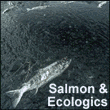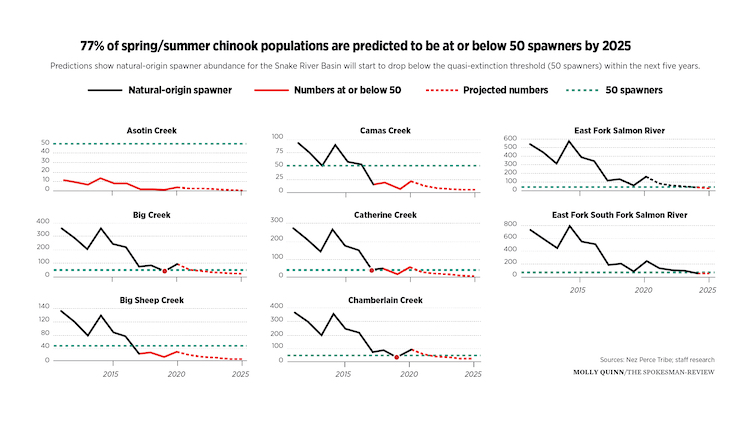forum
library
tutorial
contact

Columbia River Salmon, Steelhead Returns
Average 2.3 Million Each Year
by Matthew WeaverCapital Press, December 13, 2024
|
the film forum library tutorial contact |

|
Columbia River Salmon, Steelhead Returns
by Matthew Weaver |
Double the returns of the 1990s, but ...
half of the goal of 5 million fish by 2025
 About 2.3 million salmon and steelhead migrate up the Columbia River each year, according to the Northwest Power and Conservation Council.
About 2.3 million salmon and steelhead migrate up the Columbia River each year, according to the Northwest Power and Conservation Council.
That's double the returns of the 1990s, but half of the goal of 5 million fish, according to the council, which tracks performance indicators for fish and wildlife in its Columbia River Basin Fish and Wildlife program.
The 10-year rolling average from 2014 to 2023 stands at 2.3 million fish, similar to the average of 2.4 million between 2004 and 2013.
It's also an improvement over the 1990s, when the average dipped to 1.3 million, according to the council.
The total return of adult fish in 2014 was the closest to reaching that 5 million target, with 4.6 million.
The most recent 10-year rolling average reflects a positive trend in total abundance since the 1990s, the council states.
Total run size calculations include ocean harvest, returns to mouth of the river, and the adult fish tracked migrating past Bonneville Dam, said Peter Jensen, a council communications specialist.
The program's numerical goals for salmon and steelhead, including the overall goal of 5 million fish, are part of an overarching objective to protect, mitigate and enhance salmon and steelhead adversely affected by the Columbia River hydroelectric power system, including spawning grounds and habitat.
Total spring chinook from 2008 to 2017, were 79% hatchery fish, according to a 2020 National Marine Fisheries Service, or NOAA Fisheries, report. Total summer and fall chinook were 61% hatchery fish.
Total summer steelhead were 79% hatchery fish. Total winter steelhead were 64% hatchery.
The goal is to propogate more wild fish.
More fish above Bonneville Dam
Prior to the 1850s, more than 80% of salmon and steelhead returning to the Columbia River migrated to the interior regions of the basin, above where Bonneville Dam is today.
More salmon and steelhead are migrating to areas above Bonneville Dam, the council said.
Council staff reviewed the proportions of adult fish returning to the mouth of the river and migrating above Bonneville between 1984 and 2023. From 1984 to 1989, the proportion migrating past Bonneville exceeded 50% only one time, in 1985. It reached a 40-year low in 1986, when only 32% of adult fish returning to the mouth of the river migrated past Bonneville.
It exceeded 60% every year between 2004 and 2021, and met or surpassed 70% in 2012, 2013, 2015 and 2020. It dipped to 59% in 2022 and 56% in 2023, respectively.
Getting more adult fish above Bonneville Dam is crucial to supporting tribal harvest, sport fisheries, and natural reproduction in the middle and upper portions of the basin, according to the council.
"Increased salmon and steelhead abundance in the Columbia River Basin -- especially above Bonneville Dam -- over the past 40 years marks important progress," council member Louie Pitt, who represents Oregon and is a member of the Confederated Tribes of the Warm Springs, said in a council press release.
"These fish still face severe stresses from climate change, pressures from human population growth in the Basin, and other environmental impacts. Some stocks are struggling right now. We cannot ease up in our collective efforts to help these fish populations grow stronger and larger everywhere we can -- including in blocked areas of our basin such as above Chief Joseph and Grand Coulee dams."
The council is amending and updating its Fish and Wildlife program, Jensen said. In January, the council will issue a call for recommendations for its 2025 amendment process.
learn more on topics covered in the film
see the video
read the script
learn the songs
discussion forum
